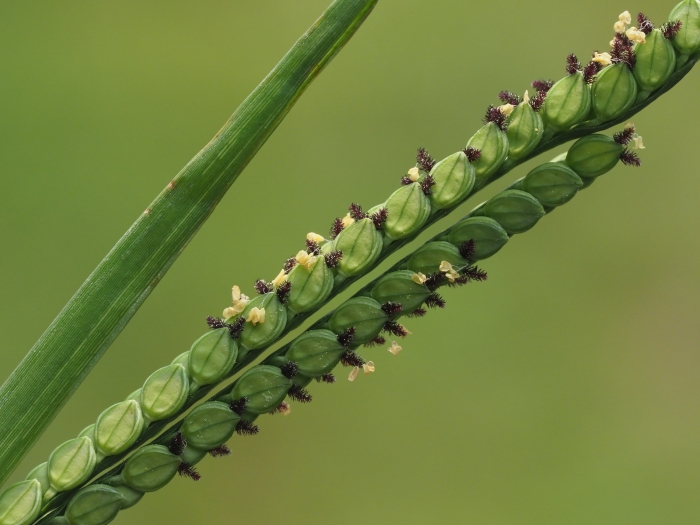Field Paspalum
(Paspalum laeve)
Field Paspalum (Paspalum laeve)
/
/

© Kevin Faccenda
CC BY 4.0
Image By:
© Kevin Faccenda
Recorded By:
Copyright:
CC BY 4.0
Copyright Notice:
Photo by: © Kevin Faccenda | License Type: CC BY 4.0 | License URL: http://creativecommons.org/licenses/by/4.0/ | Uploader: kevinfaccenda | Publisher: iNaturalist |
























Estimated Native Range
Summary
Paspalum laeve, commonly known as Field Paspalum, is a perennial grass native to a variety of habitats in North America, including open fields, prairies, and disturbed areas. It is particularly threatened in Connecticut and endangered in New York. Field Paspalum typically grows to a height of 1 to 3 feet (0.3 to 0.9 meters) and is characterized by its light green, glossy leaves and a tufted growth habit. The plant produces small, inconspicuous flowers during the late summer months, which are not particularly showy but are important for seed production.
Field Paspalum is valued for its ability to thrive in a range of soil conditions, from moist to dry, and for its contribution to soil health by preventing erosion. It is often used for forage in pastures and can be found in restoration projects where its robust root system helps stabilize the soil. In cultivation, it prefers full sun to partial shade and can tolerate a variety of soil types, though it does best in well-drained soils. While not commonly used in ornamental landscaping, it can serve as a low-maintenance ground cover in naturalized areas.CC BY-SA 4.0
Field Paspalum is valued for its ability to thrive in a range of soil conditions, from moist to dry, and for its contribution to soil health by preventing erosion. It is often used for forage in pastures and can be found in restoration projects where its robust root system helps stabilize the soil. In cultivation, it prefers full sun to partial shade and can tolerate a variety of soil types, though it does best in well-drained soils. While not commonly used in ornamental landscaping, it can serve as a low-maintenance ground cover in naturalized areas.CC BY-SA 4.0
Plant Description
- Plant Type: Grass
- Height: 1.5-3 feet
- Width: 2-3 feet
- Growth Rate: Moderate
- Flower Color: N/A
- Flowering Season: Summer, Fall
- Leaf Retention: Deciduous
Growth Requirements
- Sun: Full Sun, Part Shade
- Water: Medium
- Drainage: Fast, Medium
Common Uses
Erosion Control, Low Maintenance
Natural Habitat
Native to open fields, prairies, and disturbed areas in North America
Other Names
Common Names: Paspalum grass, Smooth paspalum
Scientific Names: , Paspalum laeve, Paspalum alternans, Paspalum angustifolium, Paspalum angustifolium, Paspalum angustifolium var. tenue, Paspalum australe, Paspalum circulare, Paspalum laeve subsp. circulare, Paspalum laeve var. angustifolium
GBIF Accepted Name: